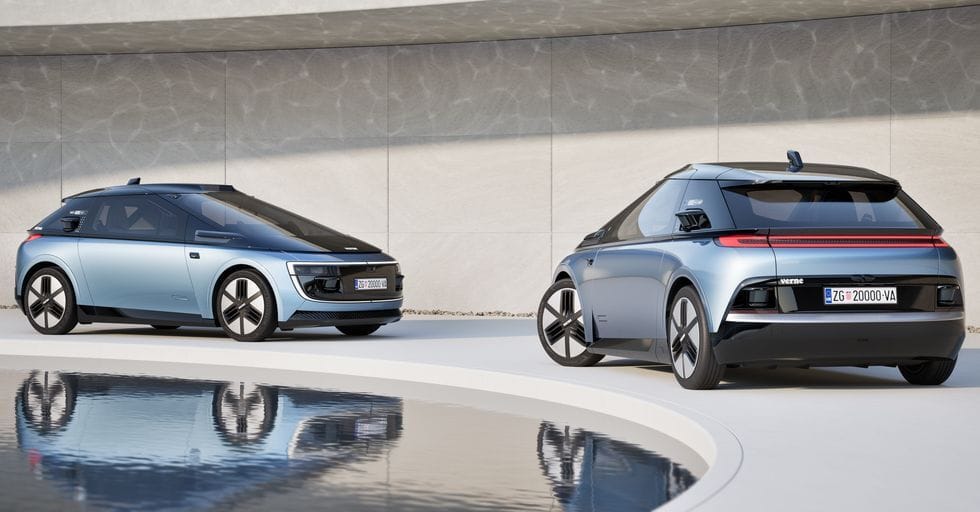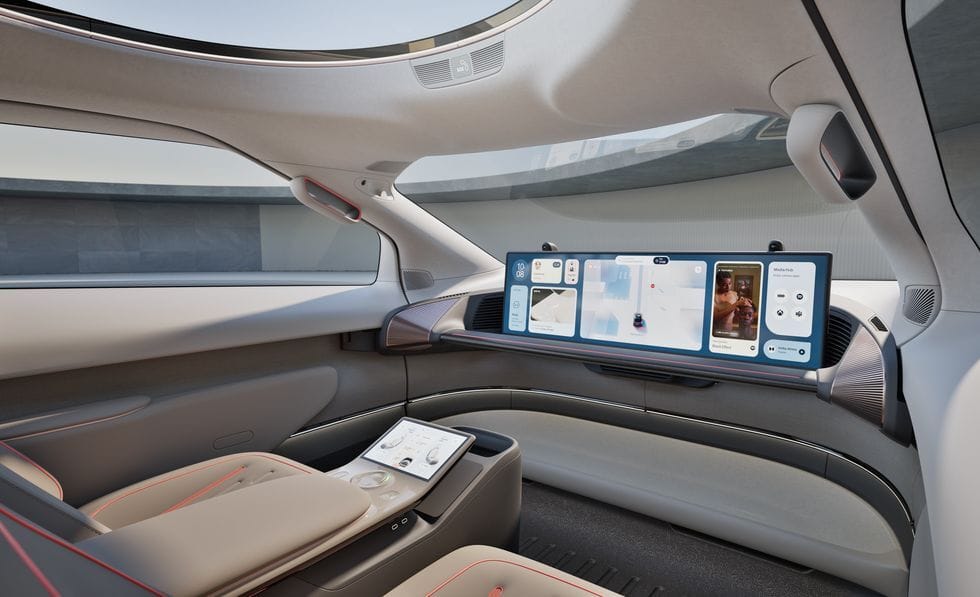By the middle of next year, we’ll have over a million Tesla cars on the road with Full Self-Driving hardware, feature complete, at a reliability level that we would consider that no one needs to pay attention, meaning you could go to sleep. From our standpoint, if you fast forward a year, maybe a year and three months, but next year for sure, we will have over a million robotaxis on the road. The fleet wakes up with an over-the-air update. That’s all it takes.
That quote isn’t from yesterday’s Tesla Robotaxi event. It’s a quote from Tesla’s Autonomy Day in 2019. FIVE YEARS AGO!!!
Since then, Alphabet-owned Waymo and GM-owned Cruise have put millions of fully autonomous miles on the road with no driver inside, and they’re beginning to scale operations in the U.S. with the help of Uber. As I highlighted in the Mobileye Spotlight in June, Mobileye is working on a 2-seat fully autonomous robotaxi with Verne — just like Tesla’s Robotaxi — and a larger people mover with Holon — like the Robovan.
Tesla, meanwhile, still has a Level 2 autonomous driving system that hasn’t even entered testing with a human safety driver. If you’re looking for an in-depth explainer of the industry, there’s a spotlight on autonomous driving here.

Verne

Verne

Holon
Yesterday, I sent an update that outlined what I wanted to hear from Elon Musk at the 10/10 robotaxi event before I took the robotaxi seriously. We got some answers.
But I left the event with more questions than before.
Is a Robotaxi without a steering wheel legal?
I think the answer ***might*** be “yes,” but it’s not entirely clear after GM waited two years for approval of the Cruise Origin.
What milestones does FSD (supervised) need to meet before testing of FSD (unsupervised) begins?
Will people want to own a fleet of Robotaxis?
But I thought I would start with the messy, difficult part of launching an autonomous vehicle fleet.
This post from Cruise founder and former CEO Kyle Vogt was posted before the event, and I thought it was instructive. I’ve posted the full post below.
At Cruise, I built robotaxis that completed 250k driverless rides, including the first rides ever in a major city.
With the Tesla event coming up, many people have asked for my thoughts. I truly hope they get robotaxis working. Autonomy is the fastest and most effective way to eliminate car accidents, and we desperately need this.
I don’t know what we will see tonight. What I know is that it takes a non-trivial amount of work to go from making a car mostly drive without interventions to safe, robust, and legally compliant robotaxi network that meshes well with local communities.
So here are 15 key things to look for from new robotaxi players:
1) Getting stuck - is there a method for remote operators to relocate unoccupied vehicles that are blocking traffic or emergency vehicles? What happens if there are no available remote operators and the vehicle becomes stuck?
2) Detecting collisions - is there a high recall system that can detect collisions, including minor contact with cycles or pedestrians? Does this comply with local, state, and federal reporting requirements?
3) AI override - is there a way for remote confirmation of critical, long tail decisions (is it safe to stop on these railroad tracks, was that a collision or not, is it ok to enter this emergency scene, is that officer telling me to stop)?
4) First responders - is there a way to remotely unlock cars and provide access to first responders who need to relocate a stuck vehicle? Is there a training program in place? Is there live phone support?
5) Connectivity dropouts - do these cars have Starlink, cellularly redundancy, or some other way to remain connected? What happens if telemetry is lost for an active but unoccupied vehicle and it gets stuck?
6) Sensor cleaning - is there a way to clear blocked or dirty sensors? Are various forms of degraded performance detected and mitigated?
7) Degraded states - in the event of a computer, sensor, or software failure, can the vehicle utilize a backup system to safely pull out of traffic or otherwise reach a safe stopping location? Is there coverage for all known or plausible faults? Will this work properly on highways where pulling over is not necessarily a safe option?
8) Congestion control - will vehicle take diverse routes to avoid creating traffic jams? If 20 vehicles arrive at a busy concert venue is there any “air traffic control” to ensure they don’t get stuck in a cluster?
9) Emergency vehicle detection - do vehicles correctly pull over or yield to emergency vehicles? Can they traverse active emergency scenes when necessary or appropriate?
10) Long tail detections - do they avoid flooded areas, downed power lines, wet cement, caution tape, crossing guard hand motions, open pits or manhole covers?
11) Liability - who is at fault when a vehicle causes property damage or injury? Are there high recall data logging systems in place as needed to absolve the owner of liability when the other driver was truly at fault?
12) Regulation and permitting - will these vehicles operate in states with public reporting requirements and meet all requirements? If vehicles do not have a steering wheel or traditional controls, will they be self-certified by Tesla as FMVSS compliant?
13) Bad weather - does the system correctly degrade its performance in the event of sudden changes in weather? What happens if a trip is in progress when weather becomes severe? Will it refuse to operate if conditions are too severe?
14) Pullovers - does the system avoid pulling over in bus stops, restricted areas, or in front of private driveways? What happens someone needs the car to be moved from their driveway?
15) Local laws - does the system obey local traffic laws, and who pays the ticket if there is a violation? Tesla will undoubtedly solve all of these eventually. Have they done it yet? Who knows. I’m still very excited to see what they’ve been cooking up.
Not surprisingly, this is not what was discussed, but it’s what’s needed to deploy robotaxis at scale. And that’s the ultimate goal.
It’s great to talk about someone buying 20-30 Robotaxis to start their fleet, but it’s something else entirely to build the infrastructure to make that possibility a reality.
We know that Waymo, Cruise, and Uber are working on these messy details. Is Tesla?
The Timeline For FSD (Unsupervised) and Robotaxi
We did get an indication of when Musk expects to begin testing FSD (Unsupervised) and when the Robotaxi may roll out.
We do expect to start fully autonomous, unsupervised FSD in Texas and California next year.
That’s with the Model 3 and Model Y.
And then, we expect to be in production with the Cybercab, which is highly optimized for autonomous transport, probably in 2026. Before 2027, let me put it that way.
But well before that, you will experience a robotic taxi via the Model 3 and Model Y program with permission, wherever regulators approve it in the U.S. and then outside the U.S.
To be clear, Tesla will need to go through extensive testing before regulators will allow FSD (Unsupervised) to roll out to Tesla owners. The company needs to test with a safety driver in a limited area, then expand the area, then test without a safety driver, expand the area, and likely collect a million miles of safety data.
And this won’t be undefined charts with Tesla’s safety data. Tesla needs to record when there’s a disengagement and what happened. It’ll need to show regulators what happened in incidents. There’s no papering over an accident when no driver is involved. FSD (Unsupervised) won’t be in the hands of regular people next year. But we at least know when testing should begin.
With these timelines, it’s appropriate to add the Musk buffer since announced products often come 2-5 years after he says they will. He even joked about that in the presentation. So, maybe FSD (Unsupervised) in 2028 and the robotaxi in 2030?!?
Doubling Down on Vision and AI
I was also curious about Tesla’s approach to autonomous driving in a world where Lidar and radar sensors are getting cheaper by the day. But Elon Musk doubled down on vision only.
He talked extensively about how the Robotaxi could be around $30,000, and the cost to operate would be about $0.20, not including the vehicle cost, which would more than double the per-mile cost.
What struck me was the focus on unit costs per vehicle when the tech isn’t yet proven out. And Tesla doesn’t talk about the tens of billions it’s investing in data centers to create FSD. That’s a very real cost.
The ultimate question for autonomous vehicles is what trajectory is correct.
Will AV hardware costs come down so fast that the increased cost of more sensors is negligible?
Will a vision-only AI-powered system improve so fast the vehicle hardware cost is critical?
We will see.
The Takeaway for Autonomy and the Asymmetric Portfolio
I continue to think that autonomous vehicles will be commonplace as soon as 2-3 years from now. But I don’t think Tesla will be a leader, and yesterday’s event showed why.
The company doesn’t have the technology or regulatory approval to be anywhere near deploying autonomous vehicles. Meanwhile, Waymo and Cruise are beginning to put vehicles into scaled production, which will lower their upfront costs.
Cruise, Waymo, and Uber are also beginning to operate an autonomous fleet and build a ride-sharing network that has network effects. If there are 100,000 autonomous vehicles on the road in 50 cities five years from now when the Tesla Robotaxi launches, it could be too late.
Add in the optionality of Mobileye’s autonomous driving business and the innovation automakers could have if the autonomous technology was plug-and-play, and you have lots of great options for autonomy within the Asymmetric Portfolio.
And these stocks all have very little value attributed to autonomy.
I’m excited to be invested heavily in this industry, and I remain skeptical of Tesla’s “lead” and high market cap. I may be wrong. Time will tell.
Disclaimer: Asymmetric Investing provides analysis and research but DOES NOT provide individual financial advice. Travis Hoium may have a position in some of the stocks mentioned. All content is for informational purposes only. Asymmetric Investing is not a registered investment, legal, or tax advisor or a broker/dealer. Trading any asset involves risk and could result in significant capital losses. Please, do your own research before acquiring stocks.
